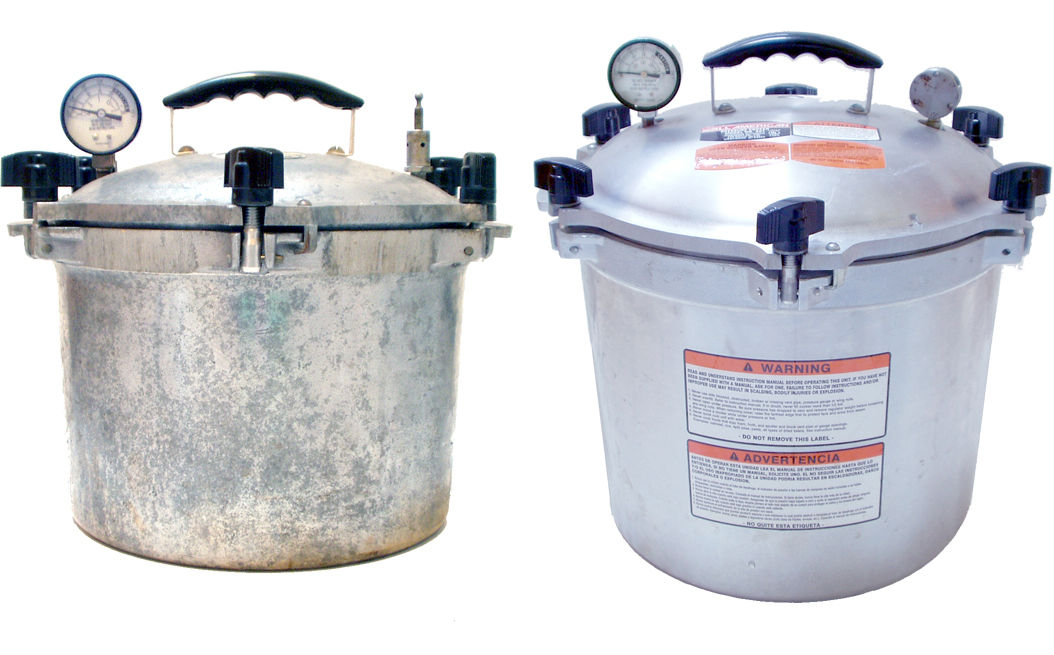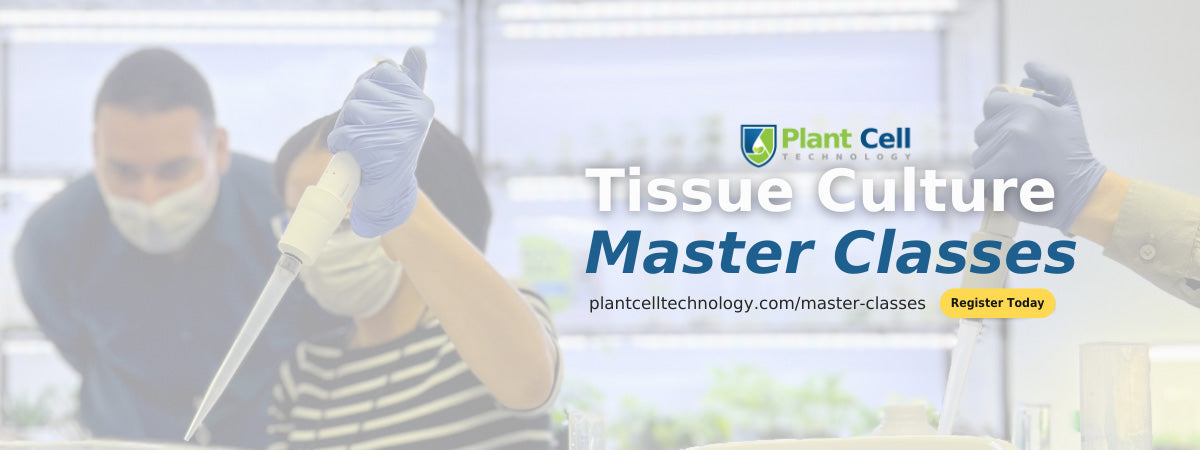
Autoclave: Principle, Types, and Precautions
As a content and community manager, I leverage my expertise in plant biotechnology, passion for tissue culture, and writing skills to create compelling articles, simplifying intricate scientific concepts, and address your inquiries. As a dedicated science communicator, I strive to spark curiosity and foster a love for science in my audience.


The maintenance of aseptic conditions is an absolute requirement in tissue culture labs. Autoclave, also known as steam sterilizer, is the most effective machine for the sterilization of lab equipment, water, or media. The machine uses steam under pressure to kill bacteria, viruses, and spores present in/on the equipment or culture media.
Introduction
The maintenance of aseptic conditions is an absolute necessity in a tissue culture lab. That's why you should be aware of the several sterilization techniques used in labs, their purposes, and the machines used to perform the process.
Two most commonly used instruments used in plant tissue culture labs for the sterilization of equipment and materials are autoclave and microwave. They both work on two different principle of moist heat sterilization (Autoclave) and dry heat sterilization (microwave).
But, how do these devices or machines work? What types of them are available and what are the differences? And, how do they help you in your work? These are some questions that need to be addressed when you are about to decide if you want the equipment or not, or which equipment will be suitable for your fashion of work!
By keeping these questions in mind, we've already created a series of articles on the equipment of the tissue culture lab and how they work. In this article, you are going to learn all about autoclaves, their workings, and their uses. So, let’s dig in!
What Is An Autoclave?
Autoclave, also known as steam sterilizer, is the most effective machine used for the sterilization of lab equipment, water, or media. The machine uses steam under pressure to kill bacteria, viruses, and spores present in/on the equipment or culture media. It is used in scientific labs, healthcare facilities, and industrial operations for the sterilization of a range of tools, vessels, solutions or media, and materials.
The first autoclave was invented by Charles Chamberland in 1879. But, the concept of disinfection and sterilization was introduced in 1881 by Robert Koch. Then in 1933, the modern autoclave, the first pressure steam sterilizer with control performance, was developed.

Image: The simplest autoclave (pressure cooker)
By: William Rafti of the William Rafti Institute, Attribution, https://commons.wikimedia.org/w/index.php?curid=1...
PRINCIPLE OF AUTOCLAVE
The autoclave works on the principle of moist heat sterilization. The high pressure inside the chamber increases the boiling point of water for the sterilization of equipment, while ensuring the rapid penetration of heat into the deeper parts of equipment. The moisture present in the steam causes coagulation of proteins of microbes causing irreversible loss of their activity and functions. Thus, killing them and sterilizing the equipment.

Source: Consteril
Image: Working or principle of autoclaves.
HOW DOES AUTOCLAVE WORK?
All size of autoclaves work on a single principle, that involves three cyclic phases of sterilization that are given below:
- Purge phase: Air present in the sealed chamber is displaced with steam that moves in through the sterilizer.
- Exposure phase: In this phase, the exhaust valve is closed and the temperature and pressure inside the sealed chamber are increased to the desired set point. The temperature is maintained for the set duration of time.
- Exhaust phase: The exhaust valve is opened, steam is removed, and the chamber is restored to normal temperature.
Components of Autoclave and Their Functions
1. Pressure chamber
The pressure chamber is the main body of the autoclave. It consists of an inner chamber and an outer jacket. Generally, the inner chamber is made of stainless steel/gunmetal and the outer chamber is made of the iron case.
The autoclave in the labs and hospital comes with a jacketed chamber that is filled with steam and designed to reduce the time and cycle of sterilization. These autoclaves can range from sizes anywhere from 100L to 3000L. So, you can buy the machine according to your requirements.
2. Lid/Door
The lid, disconnect the chamber from the outside atmosphere and seal it to create the desired temperature and pressure inside the autoclave. Its consists of three other parts: Pressure gauge, whistle, and safety valve.
The pressure gauge shows the pressure build-up inside the autoclave and assures the safety of the machine and working conditions. The whistle present in the autoclave is the same as that of the domestic pressure cooker. It controls the pressure inside the chamber by releasing a certain amount of vapor.
The other crucial part of the autoclave is the safety valve. It has a thin layer of rubber, which bursts itself to release the pressure inside the chamber if the autoclave fails to perform its operations. It ensures your safety from any kind of autoclave explosion.
3. Steam generator (if applicable)
A steam generator is present underneath the chamber. It has an electric heating system that heats water to generate steam inside the chamber. Always, ensure the right volume of water is available in the generator to run the process smoothly and avoid burning or heating of autoclave parts.
4. Vacuum generator (if applicable)
This removes air from the chamber as the presence of any air pockets in the chamber might support the growth of any organism and your equipment will not be sterilized.
5. Waste-water cooler
Autoclaves are equipped with a waste-water cooler that cools the effluent (air, steam, and condensate) before it enters the draining pipes. It avoids damage of draining pipes that can be caused by extremely heated water.

Image: A schematic diagram of autoclaves with their different labeled parts.
Source: Microbenotes
Types of Autoclave
Today, different types of autoclaves are present according to your needs. It includes:
- Pressure cooker type/ Laboratory bench autoclaves (N-type): It’s a domestic pressure cooker that is a perfect fit for tissue culture enthusiasts or hobbyists.
- Gravity displacement type autoclave: It’s the most common type of autoclave used in research laboratories. In this autoclave, steam displaces air in the chamber by gravity through a drain port.
- Positive pressure displacement type (B-type): This is an advanced autoclave, in which steam is generated in a separate steam generator, which is then passed into the autoclave for sterilization of equipment.
- Negative pressure displacement type (S-type): This is the most expensive type of autoclave. It comes with a vacuum generator and steam generator that works efficiently to achieve complete sterilization of equipment.

Figure: Types of autoclave used in different settings.
Source: Microbeonline
How To Use An Autoclave?
Autoclave is one of the crucial machines of a tissue culture lab. It's required to sterilize media, culture vessels, tools, and other materials and equipment. However, you need to be alert (see precautionary points in the next section of this blog) while using the equipment.
Here's the step-wise procedure of using an autoclave in your lab:
- Cover the top of the flask containing media with foil and place a piece of an autoclave tape over the foil. An autoclave tape is a normal looking tape that turns into a strip containing black diagonal lines when exposed to high temperature. This helps you to be aware of the sterilized containers. If you've prepared media in bottles, do not tighten the cap, just keep it loose about half way and place the autoclave tape on top of it.
- Turn on the power and ensure the drain valve of the autoclave is closed.
- Add deionized water to the level-indicator line.
- Now place the flask of culture media, tools, and other materials into the basket. Make sure there's enough space between each item and nothing is touching the wall and bottom floor of the autoclave.
- Place the basket in the autoclave and close the lid. Turn the handle to create an air tight seal.
- Use the control panel to set the temperature to 121 degree Celsius and the pressure to 15 psi.
- Run autoclave for at least 15-20 minutes.
- Once the cycle ends and pressure gauge show 0 psi, slowly open the lid of the autoclave while wearing heat-resistant gloves.
- Take out your materials from the autoclave and let them cool before use.
And, done! Your media and tools are ready to use. Just ensure opening them inside the laminar flow hood for use.
Be Precautious while using Autoclaves
- Do not sterilize waterproof or water-resistant materials like oil or powders.
- Do not overcrowd the autoclave with the vessel and equipment. If possible sterilize your equipment in a shift-wise manner.
- Only use autoclavable bags to autoclave packages wastes.
- Use autoclavable bags to sterilize your equipment. Do not use aluminum foils.
- Do not fill the autoclave chamber up to the lid.
- Never attempt to open the autoclave while it’s operating.
- Tightly close the lid to ensure the completely closed condition of the autoclave for proper sterilization.
- Do not use regular plastics or trays in the autoclave.
- Never autoclave flammable, reactive, corrosive, toxic, or radioactive materials, household bleach, or paraffin-embedded tissue.
- Fill the water in the steam generator up to the volume where it touches the end of the vessel or chamber of the autoclave.
It’s short and crisp information that you should know about autoclaves. It’s always better to understand the use and principle of equipment you are working with for a better understanding of the science behind it, how it works, and if anything goes wrong, you know what it is!!
Interested In Learning More About Tissue Culture Concepts And Equipment? Plant Cell Technology Can Help!
Plant Cell Technology is helping tissue culturists worldwide by providing unique and world-class products and services that smoothen their process. The PCT Store has MS media, agar, gellan gum, Plant Preservative Mixture (PPM™), culture vessels, Biocoupler™, and masks in its store to facilitate your processes.
We also curate weekly blogs and videos on tissue culture topics. They are all related to tissue culture equipment, practical, tips, and tricks, how-tos, basic concepts, and the latest news. Our YouTube videos teach you exactly how to carry out the tissue culture operation.
And, yes! If you’re stuck at any stage of tissue culture, you can book an appointment with our tissue culture expert. They will help you to solve your query on a video call and give you the right direction to proceed with your experiment.
Occasionally, we also bring you comprehensive master classes led by tissue culture experts, having 15-30 years of experience in the field. The two most frequently conducted classes include Cannabis tissue culture master class and Houseplant and Carnivorous plant tissue culture master class.
Interested in learning more about our master classes and joining your favorite one? Visit this link now!

Source: Giphy
Blog Categories
View by Level
Popular Blogs

How Samantha Bridges the Gap Between the Nursery and the Lab
The Introduction Building a tissue culture program from the ground up requires more than just scientific knowledge—it requires the grit...
Read More
Understanding The Synthetic Seed Technology
Introduction Let’s be honest: traditional plant propagation can be a logistical nightmare. If you’re working with recalcitrant species—those stubborn plants...
Read MoreSubscribe to Our Newsletter
2 comments
Great read, indeed. Thanks for sharing. Would love to really dig deep about autoclave.
https://singapore.swagelok.com/en
nice








Join the conversation
Your email address will not be published. Required fields are marked